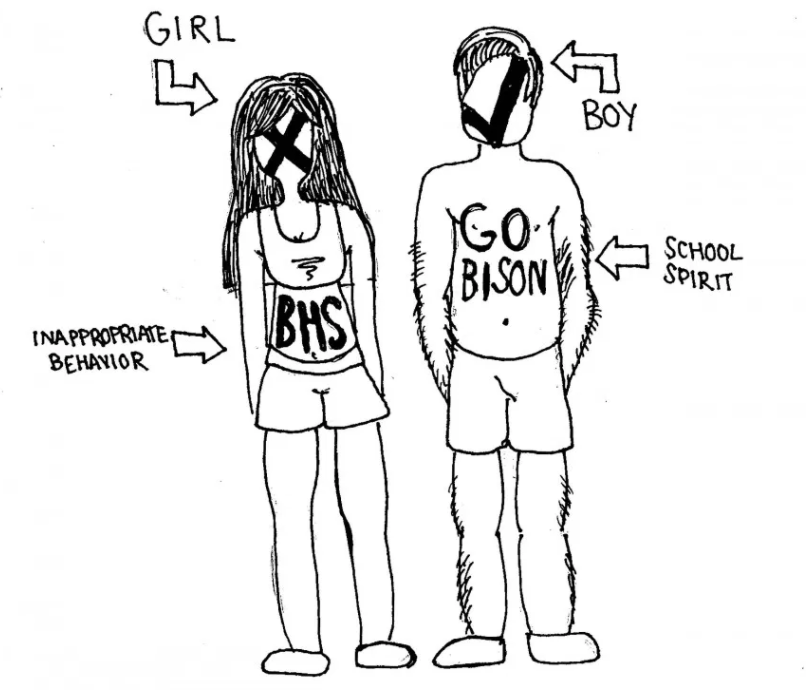Staples dress code discriminates against female students
Dress policy discriminates against women out of fear that women’s bodies are a distraction. However, men sexualizing women is not a woman’s fault and women wearing revealing clothing does mean they are automatically being “sexually suggestive.”
A week ago, I witnessed a female freshman at Staples being sent to the assistant principal’s office for wearing a tank top paired with a zip-up hoodie overtop. A male wearing a muscle shirt with a similar zip-up covering his shoulders would most likely not have been subject to the same consequence.
In the student handbook, Staples enforces a dress policy. The handbook states that clothing that is “inappropriately revealing” is prohibited. “Inappropriately revealing” is inevitably defined differently based on the gender and physical build of a student. Women who are considered to be “curvier” are generally disproportionately targeted for violating dress policy.
The handbook additionally includes that “halter tops” are not considered acceptable. Halter tops are tank-top-like-shirts that are primarily advertised towards women. The handbook does not include an example of clothing that is typically worn by men to be unacceptable.
Sexism is present in dress policies because of the outdated belief that women wearing “inappropriately revealing” clothing is distracting towards men. Promulgating the logic that women are responsible for the actions of males is impermissible. When a woman wears clothing that is revealing, she is not automatically being sexually suggestive. Instead of condemning women, men should be taught to focus their attention on school rather than the looks of their female counterparts.
Sexism is present in dress policies because of the outdated belief that women wearing “inappropriately revealing” clothing is distracting towards men. Promulgating the logic that women are responsible for the actions of males is impermissible.
— Lauren Hassell '22
Of course there are circumstances where the Staples dress code is valid. Such as, according to the handbook, a student wearing clothing with “writing, pictures, or insignia that advocate violence, racial, ethnic, or religious prejudice, or the use of drugs or alcohol” is not allowed. However, as the weather gets warmer and students begin to wear less clothing, women should feel comfortable wearing tank tops instead of feeling as if they are a distraction. Men sexualizing women is not a woman’s fault.
The dress policy should be rewritten to be fair and unbiased, not tailored to the shape of women’s bodies.

Lauren Hassell ’22 has been a part of Inklings since sophomore year, but has been a part of the journalism world for a while. Hassell’s interest...



















































